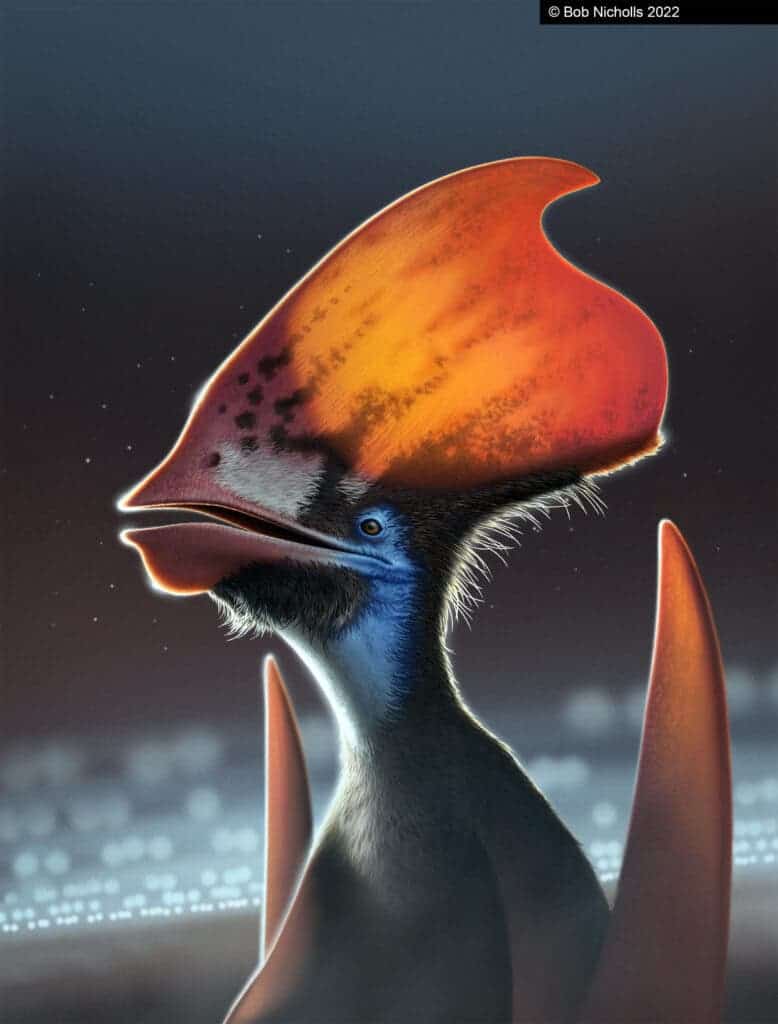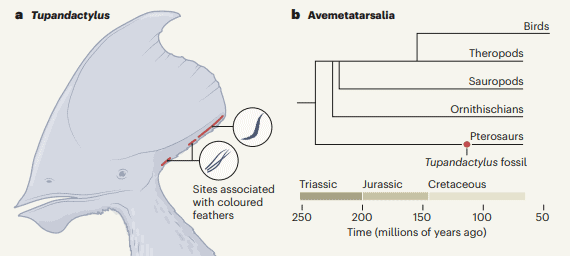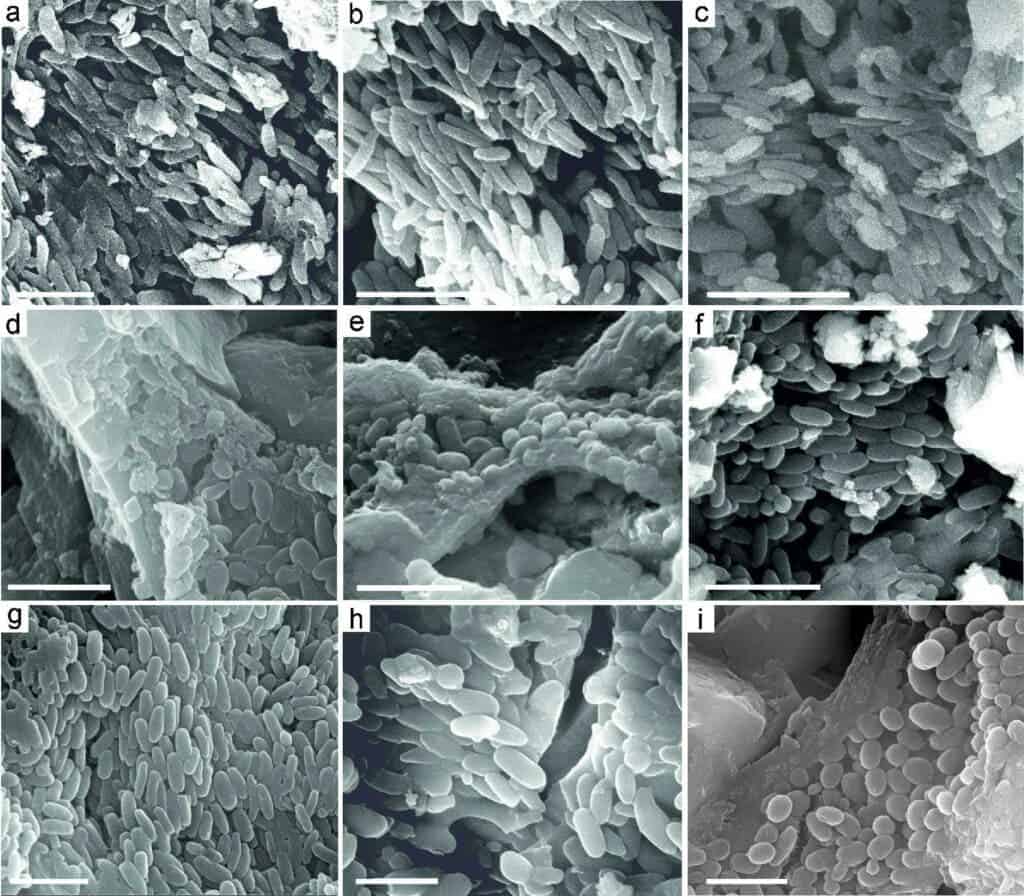A study based on a remarkably well-preserved fossil sheds new light on the evolution of feathers and their many uses, which go way beyond just flying.

If you’re a kid, you probably classify animals in a simple fashion: birds fly and have feathers, mammals have fur, and lizards have scales. But the reality is rarely simple. Some mammals also fly (bats), some dinosaurs had feathers as well, and some lizards apparently could also fly (pterosaurs). To make matters even more complicated, this new study suggests that pterosaurs also had feathers, but they didn’t use them for flying.
Pterosaurs were a group of large, flying lizards that lived throughout most of the Mesozoic. Although it’s tempting to think that they’d be related to birds, they’re actually quite distant relatives. Not only are pterosaurs not the ancestors of birds, but they’re not dinosaurs, either. They’re a group of warm-blooded flying lizards, that left no descendants after the Cretaceous. But they still left something behind: fossils.
A colorful fossil
Pterosaur fossils are relatively rare because their bones are fragile and rarely form clear fossils. In one sense, this is also the case with the newly-analyzed fossil, Maria McNamara, one of the study authors, told ZME Science. The specimen, which researchers accessed from a private collector and is now in Brazil, only has the head crest and part of the skull conserved. But the part that was conserved held a few surprises.
“What is remarkable about the specimen is the fact that it preserves various soft tissues — skin fibers and, especially, feathers,” McNamara explains. “Feathers were reported previously in pterosaurs two years ago, but only in two juvenile specimens. Because those feathers do not look like the feathers of modern birds, feathers in pterosaurs have been controversial.”
Before this study, it was known that pterosaurs had fluffy coats consisting of hair-like fibers called pycnofibres, but it was unclear whether these were truly feathers or not.
The new finding puts the debate to rest. Not only does the fossil contain clear signs of feathers, but the fossil feathers even preserve tiny granules of the pigment melanin. Not only does this tell us that pterosaur feathers were likely colored, but it helps researchers better understand how feathers evolved.
“Unlike the pterosaur melanosomes reported previously, the melanosomes in the Brazilian specimen have different shapes in different feather types,” McNamara says.
It’s really exciting to find this in pterosaurs, the researcher adds, because it means that pterosaurs would have had varied colors in their feathers due to different shapes of the melanosomes — we see the same feature in theropod dinosaurs and birds. This also suggests that the feathers played a visual role.
We believe it very likely that this is a shared feature in the two groups and was probably present in the common ancestor of birds and dinosaurs back in the Early Triassic,” she adds.

The pterosaur analyzed here is called Tupandactylus, a genus that has two species with a wingspan of 2.7 meters (8.9 ft) and up to 4 meters (13.1 ft). However, despite such an impressive wingspan, Tupandactylus spent most of its time as a ground forager, only taking short flights (probably to escape predators).
In fact, the study authors suggest these feathers played no role in flight at all. They also don’t seem to be playing a role in thermal insulation; instead, the researchers propose, these feathers were used for signaling. Just like some birds have colorful feathers to attract mates, the pterosaurs may have also used these feathers for signaling.
“Pycnofibres in pterosaurs have traditionally been interpreted as having functions in insulation in keeping the body warm. The juvenile pterosaurs with feathers described a few years ago preserve short feathers over almost all of the body, forming a fuzz-like layer outside of the skin. In those specimens, the feathers probably functioned primarily in insulation in the new pterosaur from Brazil. The different melanism geometries in different feathers strongly suggest different colors and therefore functions in communication – visual signaling.”

Evolving feathers
The most important part of this finding, McNamara says, is what it tells us about the evolution of feathers. Dinosaurs (including fossil dinosaurs and modern-day birds) had feathers of different colors, owing to the different shapes of their melanosomes, the researcher says. If pterosaurs can also do this, it suggests that the feature was evolved by their common ancestor. In other words, McNamara adds, the genetic machinery that controls melanosome shape (and therefore feather color) was in place in the common ancestor of dinosaurs and pterosaurs. This further implies that the use of feathers for signaling is an old feature, used way before birds emerged. It also suggests that this ancestor may have been warm-blooded.
This marks a paradigm shift from how we normally think about feathers.
“Until now, much of the discussion about the origins of feathers has focused on their use in flight — an adaptation that arose in dinosaurs called theropods during the Middle to Late Jurassic epochs (about 165 million years ago),” writes Michael J. Benton, a British palaeontologist, in an accompanying News and Views article. “This new evidence will probably lead to a refocusing on the capacity for insulation that feathers provide as being, presumably, the main reason for their development, followed by their use for signalling.”
“The presence of feathers for insulation [also] suggests that the ancestors of pterosaurs and dinosaurs, and ultimately of birds, were warm-blooded to some degree, and lived faster lives than many of the other reptiles of their day,” Benton adds.
This is quite a lot to draw in from a single fossil, but there may be plenty of other impactful fossils out there. There are tens of thousands of fossil specimens that preserve feathers, she says. Under the right conditions (where fossils are buried quickly or sink to the bottom of water body with little oxygen), soft tissues can be excellently preserved through fossilization. Who knows what else is just waiting to be discovered?
The study “Pterosaur melanosomes support signalling functions for early feathers” was published in Nature.






